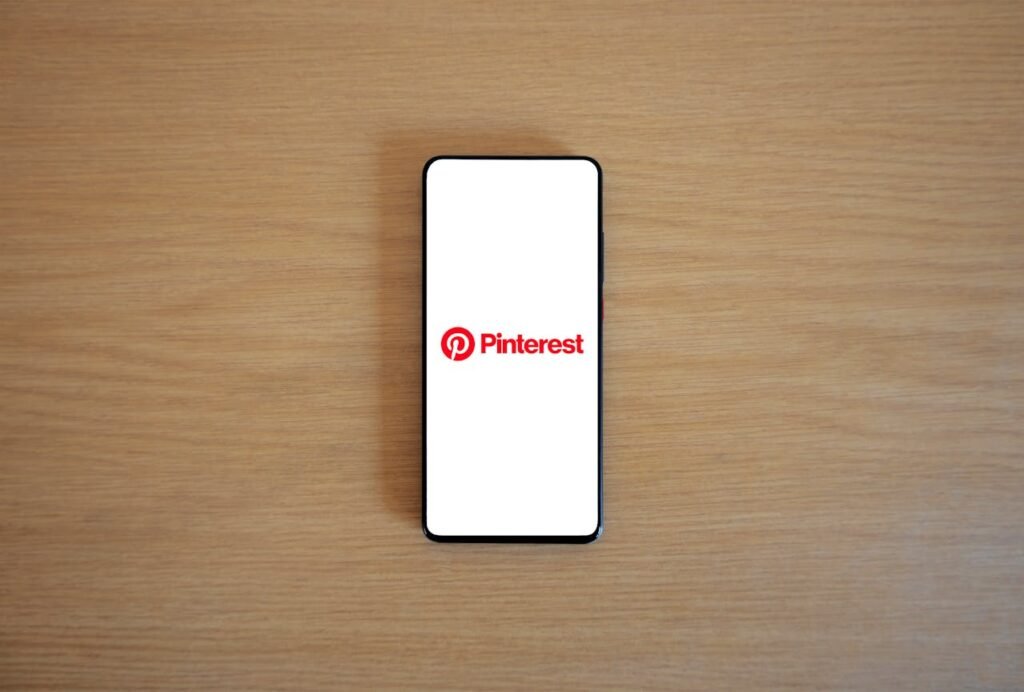In the ever-evolving world of business, standing out from the crowd can be a challenging task. Traditional marketing methods, while still effective, may not always be enough to capture the attention of your audience. To truly transform your business, you need to embrace innovative marketing ideas that not only engage your customers but also set you apart from your competitors.
Harness the Power of Storytelling
Create a Compelling Brand Story
Your brand story is a powerful tool that can connect emotionally with your audience.
A compelling brand story should highlight the values, mission, and journey of your business. Share the story behind your company’s inception, the challenges you faced, and the triumphs you achieved.
Make your customers feel like they are a part of your journey. A strong brand story can build trust and loyalty, making your business more relatable and memorable.
Use User-Generated Content
User-generated content (UGC) is an effective way to engage your audience and build a community around your brand.
Encourage your customers to share their experiences with your products or services on social media. Feature their posts on your website and social media channels.
UGC not only provides authentic content but also makes your customers feel valued and appreciated. This can lead to increased brand loyalty and word-of-mouth marketing.
Leverage Video Marketing
Video content is one of the most engaging forms of media. Use videos to tell your brand story, showcase your products, and share customer testimonials.
Live videos, behind-the-scenes footage, and how-to videos can capture your audience’s attention and keep them engaged.
Platforms like YouTube, Instagram, and TikTok offer excellent opportunities for video marketing. The key is to create high-quality, authentic content that resonates with your audience.
Build a Strong Online Presence
Optimize Your Website for SEO
Search Engine Optimization (SEO) is essential for driving organic traffic to your website.
Ensure your website is optimized for relevant keywords related to your business. Focus on creating high-quality, informative content that addresses your audience’s needs. Use descriptive meta tags, alt text for images, and internal linking to improve your site’s visibility on search engines.
Regularly update your website with fresh content to keep it relevant and engaging.
Create a User-Friendly Experience
Your website should provide an excellent user experience to keep visitors engaged. Ensure your site is easy to navigate, with a clear structure and intuitive design. Optimize loading times to prevent users from leaving due to slow performance.
Make sure your website is mobile-responsive, as more users are browsing on their phones.
A user-friendly website can enhance engagement, reduce bounce rates, and increase conversions.
Develop a Strong Social Media Strategy
Social media is a powerful tool for connecting with your audience and building brand awareness. Develop a comprehensive social media strategy that includes regular posting, engaging content, and interaction with your followers.
Use a mix of content types, such as images, videos, and stories, to keep your feed interesting.
Monitor your social media performance and adjust your strategy based on analytics and feedback.
Embrace Social Media Innovation
Utilize Influencer Marketing
Influencer marketing can be a game-changer for your business. Collaborate with influencers who align with your brand values and have a strong following in your target market.
Influencers can help you reach a wider audience and build credibility. Choose influencers who genuinely believe in your products and can create authentic content.
Track the performance of your influencer campaigns to ensure they are delivering the desired results.
Engage with Interactive Content
Interactive content can significantly enhance user engagement. Create quizzes, polls, and surveys that encourage your audience to interact with your brand.
Interactive content can provide valuable insights into your customers’ preferences and behaviors. Use this data to tailor your marketing strategies and improve your products or services.
Gamified content, such as challenges and competitions, can also drive engagement and foster a sense of community.
Explore Social Commerce
Social commerce integrates shopping experiences directly into social media platforms.
Use features like Instagram Shopping and Facebook Shops to sell your products directly on social media. This seamless shopping experience can increase conversion rates and make it easier for customers to purchase from you.
Promote your social commerce offerings through engaging posts, stories, and ads to attract more buyers.
Innovate with Technology

Implement Augmented Reality
Augmented Reality (AR) can provide an immersive and interactive experience for your customers. Use AR to allow customers to visualize your products in their real-world environment.
For example, a furniture store can offer an AR app that lets customers see how a sofa would look in their living room.
AR can enhance the shopping experience, reduce returns, and increase customer satisfaction.
Use Artificial Intelligence
Artificial Intelligence (AI) can transform your marketing efforts by providing personalized experiences for your customers. Use AI-powered chatbots to offer instant customer support and answer frequently asked questions.
AI can also analyze customer data to deliver personalized recommendations and targeted ads.
This level of personalization can improve customer engagement and drive sales.
Leverage Data Analytics
Data analytics can provide valuable insights into your marketing performance and customer behavior. Use analytics tools to track key metrics, such as website traffic, conversion rates, and customer engagement.
Analyze this data to identify trends and make informed decisions. Data-driven marketing strategies can optimize your campaigns, improve ROI, and help you better understand your audience.
Personalize Your Marketing Efforts
Tailor Content to Individual Preferences
Personalization is key to capturing and retaining customers. Use data to understand your customers’ preferences and tailor your content accordingly.
Segment your audience based on their behaviors, interests, and demographics. Deliver personalized emails, product recommendations, and content that resonates with each segment.
Personalized marketing can enhance the customer experience, increase engagement, and drive conversions.
Create Personalized Email Campaigns
Email marketing remains a powerful tool, especially when personalized. Use customer data to send tailored emails that address individual needs and preferences.
Segment your email list to deliver more relevant content. Personalized subject lines, product recommendations, and special offers can significantly improve open rates and click-through rates.
Automated email campaigns can nurture leads and guide them through the sales funnel.
Offer Personalized Promotions
Customized promotions can make your customers feel valued and increase their loyalty. Use customer data to offer personalized discounts and special offers.
For instance, send birthday discounts, loyalty rewards, and personalized thank-you notes.
Personalized promotions show that you appreciate your customers and understand their needs, fostering a stronger connection with your brand.
Engage Your Community
Build a Brand Community
Creating a community around your brand can foster loyalty and advocacy. Use social media groups, online forums, and brand ambassadors to build a community of engaged customers.
Encourage discussions, share valuable content, and provide exclusive access to new products and events.
A strong community can turn customers into brand advocates who promote your business organically.
Host Virtual Events
Virtual events can be a great way to engage with your audience, especially in today’s digital world. Host webinars, live Q&A sessions, and virtual product launches to connect with your customers.
Use these events to provide valuable information, answer questions, and showcase your expertise.
Virtual events can reach a wider audience and create a sense of excitement around your brand.
Collaborate with Non-Profit Organizations
Partnering with non-profit organizations can enhance your brand image and build goodwill.
Choose causes that align with your brand values and support them through donations, sponsorships, and joint events.
Collaborating with non-profits shows that your business is committed to making a positive impact, which can attract socially conscious customers and create a loyal customer base.
Experiment with Content Marketing
Launch a Blog
A blog can be a valuable asset for your marketing strategy. Use your blog to share industry insights, tips, and stories that resonate with your audience.
Optimize your content for SEO to drive organic traffic to your website.
Regularly updating your blog with high-quality content can establish your authority in your industry and attract potential customers.
Create a Podcast
Podcasts are becoming increasingly popular and can be an effective way to reach your audience. Start a podcast that covers topics relevant to your industry and interests your customers.
Invite industry experts, share success stories, and provide valuable advice.
Promote your podcast on social media and your website to attract listeners and build a loyal following.
Produce High-Quality Visual Content
Visual content, such as infographics, videos, and images, can capture your audience’s attention and convey information effectively.
Create visually appealing content that showcases your products, shares valuable information, and tells your brand story.
High-quality visual content can enhance your social media presence, improve engagement, and drive traffic to your website.
Explore New Marketing Channels
Utilize SMS Marketing
SMS marketing can be a direct and effective way to reach your customers. Use SMS to send personalized offers, updates, and reminders.
Ensure that your messages are concise, valuable, and timely.
SMS marketing can complement your email campaigns and provide another touchpoint to engage with your customers.
Try Affiliate Marketing
Affiliate marketing involves partnering with individuals or companies who promote your products in exchange for a commission.
Identify affiliates who align with your brand and have a strong following.
Provide them with the tools and resources they need to promote your products effectively. Affiliate marketing can expand your reach and drive sales through trusted recommendations.
Leverage User Reviews
User reviews are a powerful form of social proof that can influence potential customers. Encourage your satisfied customers to leave reviews on platforms like Google, Yelp, and social media.
Feature positive reviews on your website and marketing materials.
Respond to reviews, both positive and negative, to show that you value customer feedback. User reviews can build trust and credibility, making it easier to attract new customers.
Optimize for Mobile Marketing
Ensure Mobile-Friendly Design
With the increasing use of smartphones, having a mobile-friendly website is essential. Ensure your website is responsive, meaning it adapts seamlessly to different screen sizes.
Optimize loading times, simplify navigation, and make sure all features work well on mobile devices.
A mobile-friendly design enhances the user experience and can improve your search engine rankings.
Implement Mobile Ads
Mobile advertising can reach your audience where they spend a lot of their time. Use platforms like Google Ads and social media networks to run mobile-specific ad campaigns.
Design your ads with mobile users in mind, keeping them concise and visually appealing.
Mobile ads can drive traffic to your website, increase brand awareness, and boost sales.
Utilize Geotargeting
Geotargeting allows you to deliver personalized content and offers based on the user’s location. Use geotargeting in your mobile ads to reach potential customers in specific areas.
For example, you can promote a special offer to users within a certain radius of your store.
Geotargeting can increase the relevance of your ads and improve conversion rates.
Innovate with Experiential Marketing
Create Immersive Experiences
Experiential marketing involves creating immersive experiences that allow customers to interact with your brand in meaningful ways. Host pop-up shops, interactive installations, or virtual reality experiences.
These events can create memorable experiences that engage your audience and generate buzz around your brand.
Experiential marketing can enhance brand loyalty and attract new customers.
Host Live Events
Live events provide opportunities for face-to-face interactions with your customers. Organize product launches, workshops, or community events to showcase your brand and connect with your audience.
Live events can create excitement, provide valuable experiences, and strengthen customer relationships.
Promote these events through your website, social media, and email marketing to maximize attendance.
Engage Through Webinars
Webinars are an effective way to share knowledge and connect with your audience online. Host webinars on topics relevant to your industry and provide valuable insights.
Use webinars to showcase your expertise, answer questions, and interact with participants in real-time.
Record your webinars and share them on your website and social media for continued engagement.
Focus on Customer-Centric Strategies
Implement a Loyalty Program
Loyalty programs can encourage repeat business and build long-term customer relationships. Create a loyalty program that rewards customers for their continued patronage.
Offer points for purchases, referrals, and social media engagement, which can be redeemed for discounts or exclusive offers.
A well-designed loyalty program can increase customer retention and drive sales.
Provide Exceptional Customer Support
Exceptional customer support can set your business apart and build trust with your customers. Ensure your customer service team is well-trained, responsive, and empathetic.
Use multiple channels, such as phone, email, live chat, and social media, to provide support. Promptly address customer concerns and go the extra mile to exceed their expectations.
Happy customers are more likely to become repeat buyers and brand advocates.
Gather and Act on Customer Feedback
Listening to your customers can provide valuable insights into their needs and preferences. Use surveys, feedback forms, and social media polls to gather customer feedback.
Analyze this feedback to identify areas for improvement and implement changes based on customer suggestions.
Showing that you value customer input and act on it can enhance customer satisfaction and loyalty.
Enhance Brand Visibility
Partner with Other Brands
Collaborating with other brands can expand your reach and introduce your business to new audiences. Choose brands that complement your products or services and have a similar target market.
Partner on joint marketing campaigns, co-branded products, or cross-promotions.
Strategic partnerships can create mutually beneficial relationships and drive growth.
Use Public Relations
Public relations can increase your brand’s visibility and credibility. Develop relationships with journalists, bloggers, and influencers in your industry.
Send press releases about new products, company milestones, or community involvement. Participate in interviews, contribute guest articles, and attend industry events.
Positive media coverage can enhance your brand’s reputation and attract new customers.
Invest in Content Marketing
Content marketing involves creating and sharing valuable content to attract and engage your audience. Develop a content strategy that includes blog posts, videos, infographics, and social media updates.
Focus on providing helpful, relevant information that addresses your audience’s pain points and interests.
Consistent, high-quality content can establish your brand as an authority and drive organic traffic to your website.
Focus on Customer Experience

Enhance Your Onboarding Process
A smooth onboarding process can set the tone for a positive customer relationship. Ensure that new customers understand how to use your products or services effectively.
Provide detailed guides, tutorials, and personalized support during the initial stages.
An excellent onboarding experience can reduce churn rates and increase customer satisfaction.
Offer Exceptional Post-Purchase Support
Customer support doesn’t end once a sale is made. Offer ongoing support to ensure customers are satisfied with their purchase.
Implement a robust customer service system that includes live chat, email support, and a comprehensive FAQ section.
Follow up with customers to gather feedback and address any issues promptly. Exceptional post-purchase support can lead to repeat business and positive word-of-mouth.
Implement a Customer Feedback Loop
Creating a feedback loop allows you to continuously improve based on customer input. Regularly solicit feedback through surveys, reviews, and direct interactions.
Use this feedback to identify areas for improvement and implement changes.
Communicate these improvements to your customers to show that you value their opinions and are committed to providing the best experience.
Enhance Customer Engagement
Implement Loyalty Programs
Loyalty programs reward repeat customers and encourage long-term relationships. Design a program that offers points, discounts, or exclusive perks for frequent purchases or referrals.
Promote your loyalty program through your website, social media, and email marketing.
A well-executed loyalty program can boost customer retention and increase sales.
Foster a Sense of Community
Building a community around your brand can enhance customer loyalty and engagement. Create online forums, social media groups, or community events where customers can connect and share their experiences.
Encourage discussions, provide exclusive content, and recognize active community members.
A strong community can turn customers into brand advocates who promote your business organically.
Use Personalized Communication
Personalized communication can make customers feel valued and understood. Use customer data to send personalized emails, messages, and offers.
Address customers by their names and reference their past interactions with your business.
Personalized communication can enhance the customer experience and strengthen relationships.
Innovate Your Product Offerings
Launch Limited Edition Products
Creating limited edition products can generate excitement and urgency among your customers. These exclusive offerings can attract attention and encourage quick purchases.
Promote your limited edition products through your website, email marketing, and social media channels.
Highlight their unique features and the limited availability to create a sense of scarcity.
Introduce Subscription Services
Subscription services can provide a steady stream of revenue and enhance customer loyalty. Offer subscription options for your products or services, such as monthly boxes, premium content access, or ongoing support.
Ensure your subscription service offers value and convenience to your customers.
Regularly update and improve your offerings to keep subscribers engaged and satisfied.
Customize Your Products
Customization allows customers to personalize products to their preferences, making them more appealing.
Offer options for custom colors, designs, or features.
Use online tools to enable customers to visualize and design their custom products. Personalized products can increase customer satisfaction and differentiate your business from competitors.
Explore Emerging Technologies
Implement Voice Search Optimization
Voice search is becoming increasingly popular with the rise of smart speakers and virtual assistants.
Optimize your website for voice search by using natural language and answering common questions your audience might ask.
Include long-tail keywords and conversational phrases. Voice search optimization can improve your search engine rankings and make it easier for customers to find your business.
Use Blockchain for Transparency
Blockchain technology can enhance transparency and trust in your business. Use blockchain to provide verifiable proof of authenticity for your products, especially if you sell high-value or unique items.
This technology can also streamline transactions and improve security.
Implementing blockchain can differentiate your business and build customer confidence.
Explore the Internet of Things (IoT)
The Internet of Things (IoT) involves connecting physical devices to the internet to collect and share data. Use IoT to improve your products, streamline operations, and enhance the customer experience.
For example, a smart home device company can use IoT to offer personalized recommendations based on usage data.
IoT can provide valuable insights and create innovative solutions for your customers.
Leverage Data and Analytics

Understand Customer Behavior
Data analytics can provide deep insights into customer behavior. Use tools like Google Analytics, Hotjar, and social media analytics to track how customers interact with your website and online content.
Analyze metrics such as page views, time spent on site, bounce rates, and conversion rates. Understanding these behaviors can help you identify what works well and what needs improvement.
Use this information to optimize your website and marketing strategies to better meet customer needs.
Segment Your Audience
Audience segmentation allows you to tailor your marketing efforts to different groups within your customer base. Use data to segment your audience based on demographics, purchasing behavior, and engagement levels.
Create targeted marketing campaigns for each segment to address their specific interests and needs.
For example, you might send personalized emails to loyal customers while targeting new customers with introductory offers. Segmentation helps increase relevance and effectiveness of your marketing campaigns.
Track Campaign Performance
Monitor the performance of your marketing campaigns to understand what drives results. Use analytics tools to track key performance indicators (KPIs) such as click-through rates, conversion rates, and return on investment (ROI).
Compare the performance of different campaigns to identify which strategies are most effective.
Continuously refine your campaigns based on these insights to improve outcomes and maximize ROI.
Implement Predictive Analytics
Predictive analytics uses historical data to predict future outcomes. Use predictive analytics to forecast trends, customer behavior, and market changes.
This can help you anticipate customer needs, optimize inventory, and plan marketing campaigns.
Implementing predictive analytics can give you a competitive edge by enabling you to make data-driven decisions and proactively address potential challenges.
Utilize Customer Feedback
Customer feedback is a valuable source of data that can inform your business decisions. Use surveys, reviews, and feedback forms to gather insights directly from your customers.
Analyze this feedback to identify common themes, pain points, and areas for improvement. Use these insights to enhance your products, services, and customer experience.
Showing customers that you value their feedback and act on it can also build trust and loyalty.
Optimize Pricing Strategies
Data analytics can help you optimize your pricing strategies to maximize revenue and competitiveness. Analyze sales data, competitor pricing, and market trends to determine the best pricing for your products or services.
Use A/B testing to experiment with different pricing models and promotions.
Dynamic pricing strategies, where prices are adjusted based on demand and other factors, can also be informed by data analytics.
Improve Product Development
Use data analytics to inform your product development process. Analyze customer preferences, sales trends, and market gaps to identify opportunities for new products or improvements to existing ones.
Monitor customer feedback and reviews to understand what features are most important to your customers.
Data-driven product development can help you create offerings that better meet customer needs and stand out in the market.
Enhance Customer Retention
Data analytics can help you identify factors that influence customer retention and loyalty. Track metrics such as repeat purchase rates, customer lifetime value, and churn rates.
Analyze this data to identify patterns and develop strategies to retain customers.
Personalized marketing, loyalty programs, and exceptional customer service can all be informed by data insights to enhance retention efforts.
Optimize Marketing Channels
Determine which marketing channels are most effective for your business by analyzing data from various sources. Track the performance of channels such as email marketing, social media, search engine marketing, and offline advertising.
Compare metrics such as engagement rates, conversion rates, and ROI across different channels.
Focus your efforts and budget on the channels that deliver the best results to optimize your marketing strategy.
Implement Data-Driven Content Strategy
Create a content strategy that is informed by data analytics. Analyze which types of content resonate most with your audience and drive engagement.
Track metrics such as page views, social shares, and time spent on content. Use this data to create more of the content that performs well and refine your overall content strategy.
Data-driven content marketing can help you attract and retain a larger audience.
Invest in Analytics Tools
Investing in the right analytics tools is essential for leveraging data effectively.
Use comprehensive analytics platforms like Google Analytics, HubSpot, and Tableau to gather and analyze data.
Ensure that your team is trained to use these tools effectively and understands how to interpret and act on the data insights.
Regularly review and update your analytics tools to stay current with technological advancements and ensure you have the best tools for your needs.
Wrapping it up
Innovative marketing is essential for transforming your business and staying ahead in a competitive landscape. By harnessing the power of storytelling, embracing social media innovations, leveraging technology, personalizing your efforts, and utilizing data and analytics, you can create compelling and effective marketing strategies.
These approaches not only engage your audience but also build lasting relationships, enhance customer experiences, and drive growth.
Keep exploring new trends, stay adaptable, and continuously refine your strategies to ensure your business thrives in an ever-changing market.
RAED NEXT:
- Top SEO Marketing Statistics to Know in 2024
- The Ultimate Guide to Search Engine Marketing Statistics in 2024
- Eco-Friendly Social Media Ideas for Earth Day
- High-Impact Social Media Ad Ideas
- Healthy and Engaging Social Media Content Ideas for Nutrition Brands






















Comments are closed.